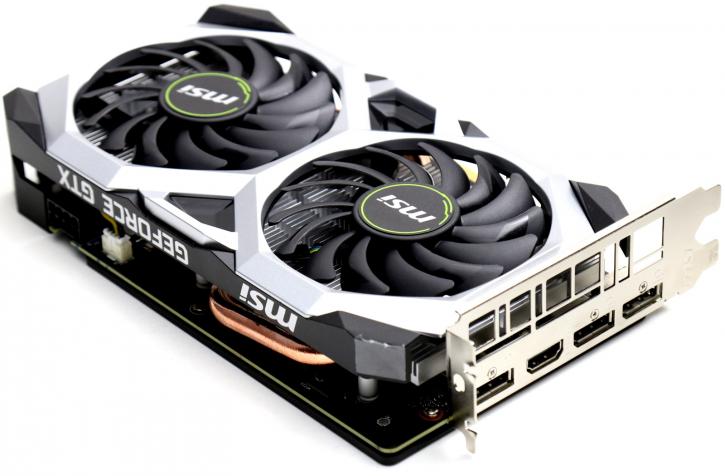Conclusion
Final words and verdict
The GeForce GTX 1660 Ti and lower SKUs (yes, they will be released) are interesting. The performance sits in that GTX 1070 / Radeon Vega 56 range with some wins and losses here and there. At a price of 279 USD that really is not a bad proposition. So that's a good thing. The problem is that we have no idea how the retail price will develop. The 279 USD models are the stripped down cheapo cooler versions. The cards like tested today can be put in the market for a tenner or two more, but really it should stop there as this card may not be more than 299 USD for a premium model IMHO. I am not bothered by the 6 GB configuration as, really, this is a Full HD / Quad HD card, and there the 6 GB is sufficient. However, there is talk about a 3 GB model, and really, just no...
When we focus in at the AIB product then MSI needed to out a 279 USD product. This is called the MSRP product and should be selling at roughly this value. With the Ventus MSI really has nothing to be ashamed about. It performs well, cools well and the acoustics sit at a very acceptable level. There is more limitation on the power limiter though, then again with an average of a 1 FPS difference, who cares. TWeaking wise this card has been limited though, our power limited was maxing out at 100%, meaning the seconds the card passes its 120 Watt board power, the power limiter will kick in and the card will get restricted. But even then the card manages to tweak well. Most, if not all cards will have that 10% OC bracket that, really, is by NVIDIA's design.
Aesthetics
The Ventus (XS) series is a normal looking product. It does not come with fancy RGB options and does not have the mega hyper cooler. If you look at the photo above you can actually see the aluminum fins. That's said, for the base MSRP product this really isn't a bad looking card IMHO. Also, a backplate is provided. While taste differs, really I think the card looks fine, it's easy to drop in card alright.
Cooling & acoustic levels
The card tops out at roughly only 65 Degrees C while gaming. So that's not bad at all, the acoustics I'd rate as normal, we doubt you'll ever hear the card once mounted into a chassis. In idle the fans do remain to spin btw. We've heard no noticeable coil whine. But I do want to note that any graphics card at a high-enough FPS can make some coil whine.
Overclocking
We've been able to push 10% of extra perf out of the card compared to the reference card. Both traditional overclocking, as well as the OC Scanner reached roughly that level. The combination of memory, voltage settings will bring you a proper overclock. Once you've applied it, you get a few percent more performance. Nice to see is that we have been able to reach roughly 14.5, even 15 Gbps on the memory, and that does help. You do need to be aware of the fact that the power limiter cannot be raised, meaning it'll kick into the TDP (Board power) limiter more quickly. However at an average performance increase of 10% and the MSRP base price, really you still cannot complain.
Concluding
We feel the new GeForce GTX 1660 Ti series is definitely something the industry needs. Most consumers have put RTX cards on hold due to the sales price of the range, which is very steep. The GeForce GTX 1660 Ti certainly addresses the issue of offering a more competitive product. It offers GeForce GTX 1070 performance (mostly slightly above it) at what should be a far more interesting price. NVIDIA, however, is in a split, they also have to face the reality that this is a product that performs at a product and a feature level they've been offering for a long time now. So who is going to step up from the GTX 1000 series? Well, anyone with a GTX 1050 or perhaps 1060. But for that last product group, the performance increase isn't heaps. So for the 1660 Ti series to become successful, the price needs to stay below the 299 USD domain, period.
So back to the AIB MSI then. Most manufacturers obviously will try and push their more expensive products, like the gaming X for MSI. The Ventus is the baseline and base-priced product series at 279 USD and perhaps 289 for the XS OC edition. For that money, you get pretty much the same performance and features as the more premium designs offer. Temps are fine, perf is fine and the acoustics normal. You are a bit more limited with a manual tweak, but relatively speaking we're talking about 2% maybe 3% difference in the tweaking result here.
The product is plenty fast for any day gaming up-to, say, the Quad HD monitor resolution of 2560x1440. The 6 GB of graphics memory seen over 8 GB really isn't a hindrance either as long as you stick to that (Wide) Quad HD domain. Looking at it from a competition point of view, the card positions itself in-between the two Vega cards, with its closest opponent being the Radeon Vega 56. The Raytracing and AI features like DLSS, of course, have been stripped away. We just cannot complain about the Ventus XS for what it is, offers and the aesthetics. So what is it going to be then? Well, the GAMING X is around $299, and the VENTUS series $279,- I still would go with the Gaming X for that higher power limiter and the sheer looks alone. But the performance otherwise is the same and if you need a bit more value for money, the Ventus XS simply would be the way to go.
Recommended Downloads
- Sign up to receive a notice when we publish a new article
- Or go back to Guru3D's front page



